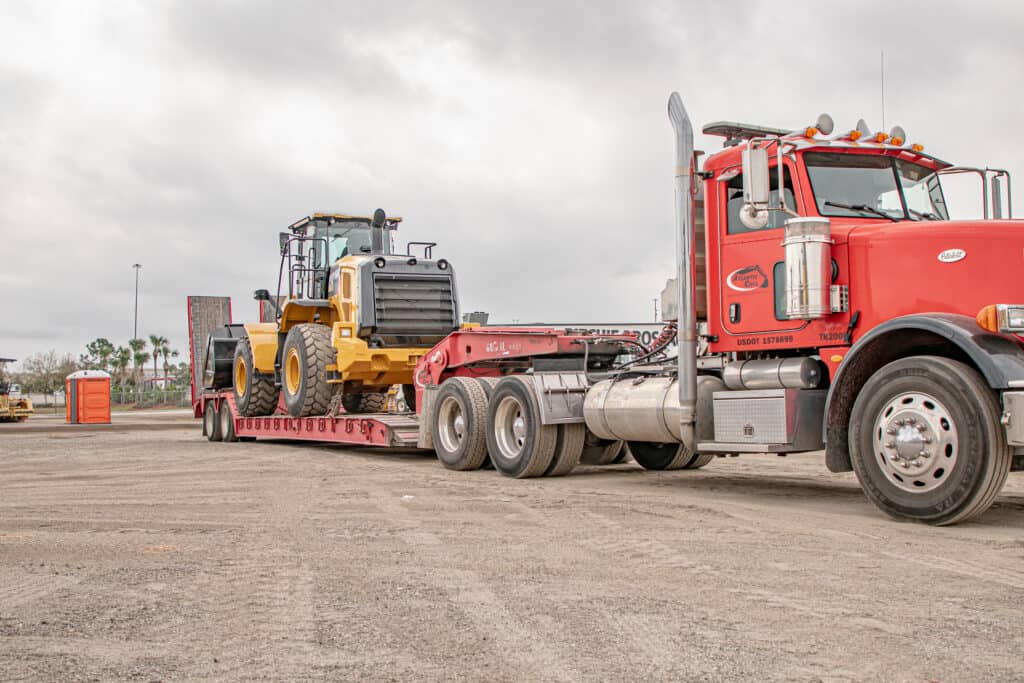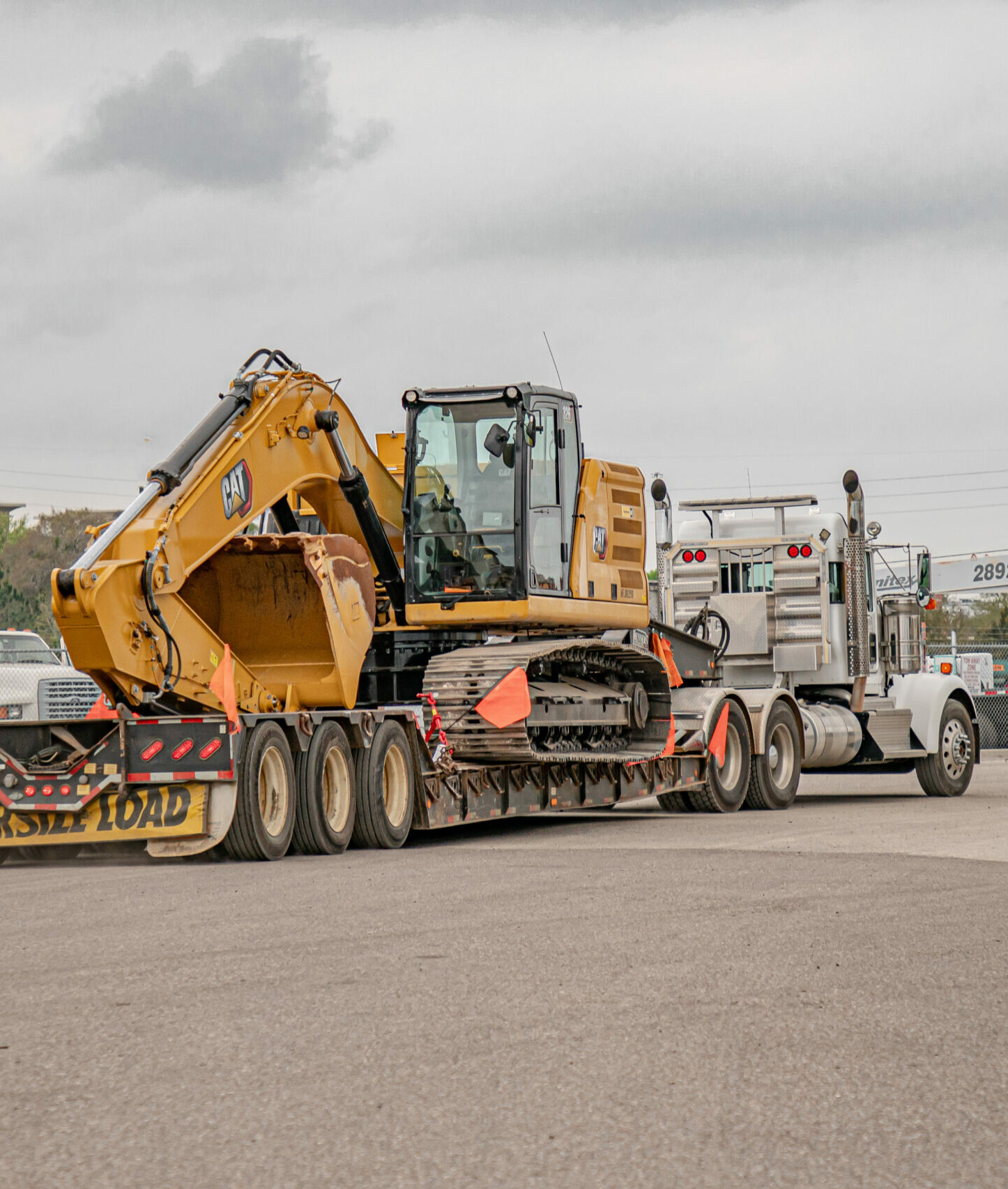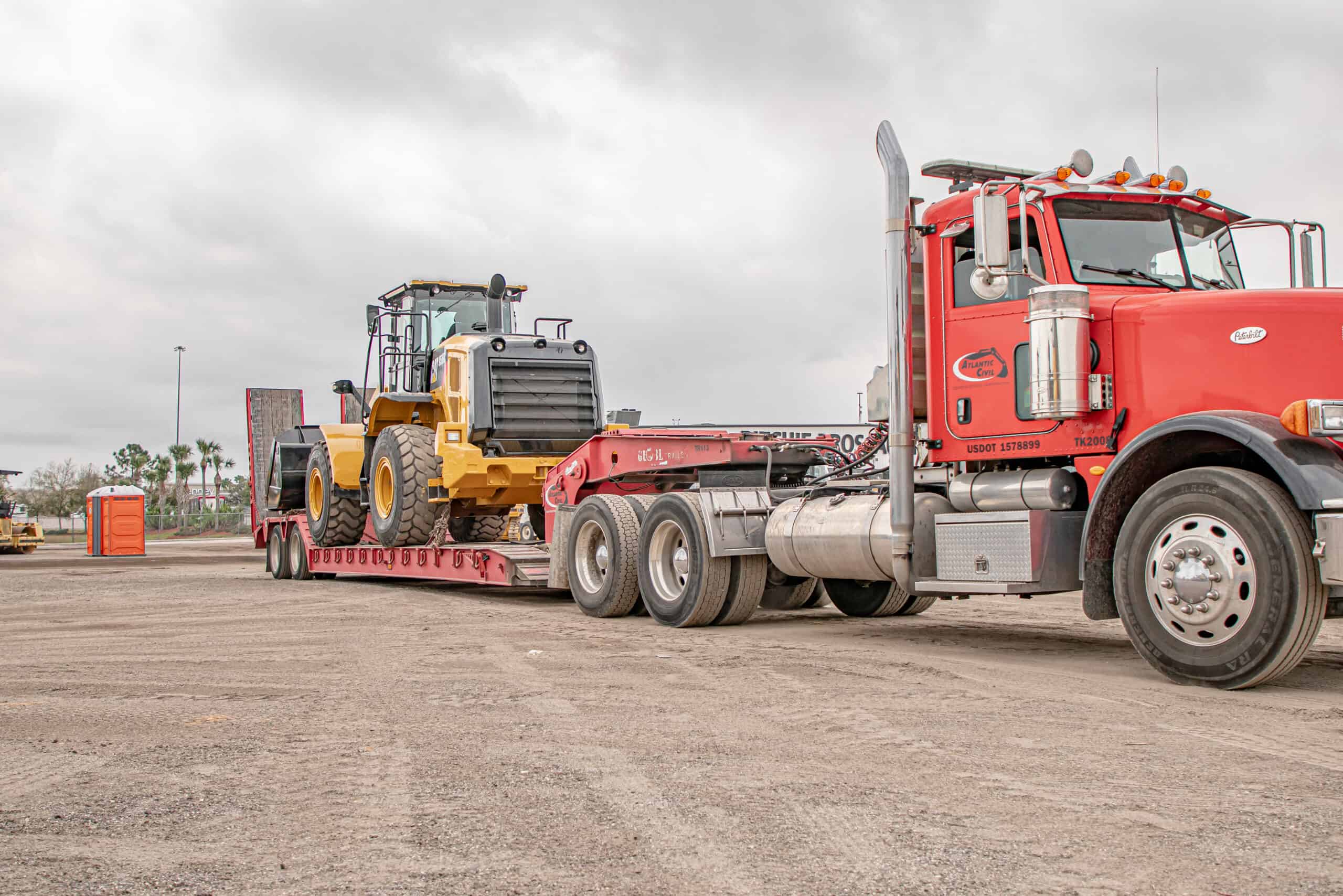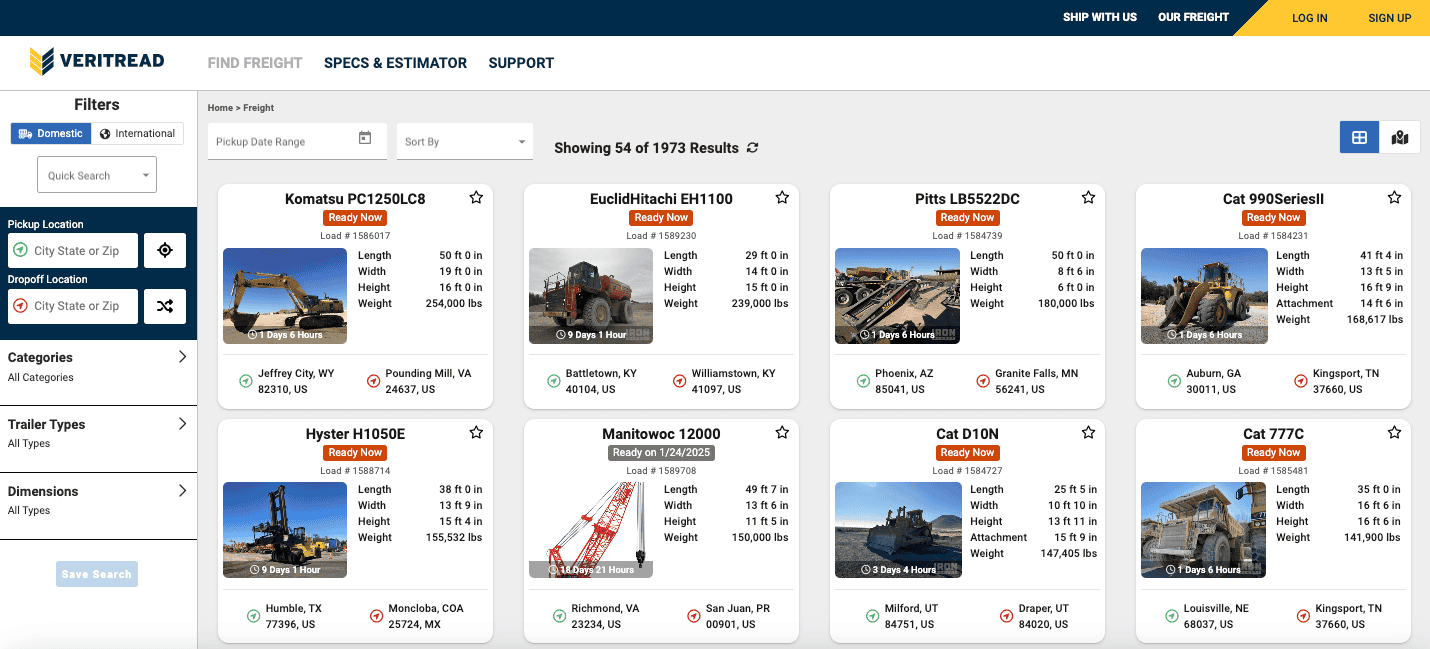Understanding Equipment Transport Services

When you need to move heavy machinery, large vehicles, or other specialized equipment, finding the right transportation service can be a daunting task. Equipment transportation is a crucial component of many industries, from construction and agriculture to mining and manufacturing. The process involves carefully planning the transport of oversized or valuable items, ensuring that they arrive safely, on time, and within budget.
In this guide, we’ll answer all the essential questions about equipment transport services, providing you with the knowledge you need to make informed decisions. Whether you’re new to the process or looking to optimize your shipping strategies, this article will cover the various types of equipment that can be transported, the different methods available, how shipping rates are determined, the permits and regulations involved, and what insurance options are available for your equipment.
Outline:
- What Types of Equipment Can Be Transported?
- What Are the Different Transportation Methods Available?
- How Are Shipping Rates Determined?
- What Permits and Regulations Are Involved in Transporting Equipment?
- What Insurance Options Are Available for Equipment During Transport?
What Types of Equipment Can Be Transported?
Equipment transportation services can handle a wide variety of items, ranging from construction machinery to industrial tools. Understanding the types of equipment that can be transported is important for ensuring you choose the right service for your needs.
Construction Equipment
Heavy construction machinery, such as bulldozers, backhoes, excavators, and cranes, requires specialized transport due to their size and weight. These machines often need lowboy trailers or flatbed trucks with additional safety features to secure them during transit.
Agricultural Equipment
Farming equipment, including tractors, harvesters, and plows, also require special handling. While some of this equipment may be smaller and less cumbersome, it still needs to be securely fastened and safely transported.
Industrial and Manufacturing Equipment
Larger industrial machinery used in manufacturing plants, such as conveyor belts, presses, and other automated systems, may need to be disassembled or require custom crating to ensure safe transport.
Vehicles and Trucks
Transporting large vehicles, such as semi-trucks, buses, or recreational vehicles, is another common request for equipment transportation services. These vehicles often require flatbed trucks or enclosed carriers.
Special Equipment
Sometimes, the equipment being transported is even more specialized. This might include sensitive or valuable items, such as laboratory equipment, or oversized items like wind turbines or bridge components, which need customized transport solutions.
What Are the Different Transportation Methods Available?
There are many transportation methods available for moving equipment, each suited to different types of equipment and delivery requirements. Choosing the right method will depend on the size, weight, and value of the equipment, as well as the destination.
Flatbed Trailers
Flatbed trailers are one of the most commonly used transportation methods for large equipment. These trucks have an open, flat surface with no sides or roof, allowing for easy loading and unloading. However, because the equipment is exposed to the elements, it may not be suitable for equipment that needs protection from weather or theft.
Lowboy Trailers
Lowboy trailers are designed for transporting heavy equipment that is too tall for standard transport methods. These trailers are low to the ground, allowing equipment to be loaded without the need for additional lifting or disassembly. They are perfect for oversized and heavy machinery, such as bulldozers and excavators.
Enclosed Trailers
For valuable or sensitive equipment, enclosed trailers offer an added layer of protection. These trailers shield equipment from the weather, road debris, and potential theft. Enclosed transportation is often chosen for transporting high-value equipment such as computers, laboratory instruments, or rare machinery.
Specialized Hauling
Sometimes, a combination of equipment and transportation methods is required for challenging shipments. This might include the use of cranes, multi-vehicle rigs, or even escorted transport for oversized loads that need to be moved on public highways.
Sea and Rail Transport
For international shipments or equipment that needs to travel long distances, sea and rail transport can be used. This is more common for transporting large equipment over long distances and involves loading equipment onto containers for ocean shipping or freight trains.
How Are Shipping Rates Determined?
Understanding how shipping rates are determined for equipment transportation services can help you manage your budget and avoid unexpected costs. Several factors influence shipping rates, and it’s essential to consider each when planning your transport.
Weight and Dimensions
The size and weight of the equipment are among the most important factors that determine the cost of transportation. Heavier and larger equipment requires more specialized transport methods, which increases the overall price.
Distance and Destination
The further the equipment needs to be transported, the higher the cost. If you’re transporting equipment across state lines or internationally, you can expect to pay more due to the added distance and potential complexities involved in cross-border regulations.
Transport Method
Different transportation methods come with different price tags. For example, lowboy trailers or enclosed transport may cost more than standard flatbed trucking due to their specialized nature.
Permits and Regulations
If the equipment being transported is oversized or requires special handling, additional permits may be necessary. These permits can add to the cost of shipping, especially for cross-country or international transport.
Insurance Coverage
Insurance is an important aspect of equipment transportation, and the cost of coverage will be factored into the overall shipping rate. Some transport companies include basic insurance in their rates, while others offer additional options for a premium price.
What Permits and Regulations Are Involved in Transporting Equipment?
If the equipment exceeds the weight limits allowed on public roads, you may need to apply for an overweight permit. These permits are issued by local and state authorities and allow for the safe and legal transportation of overweight loads.
Oversize Permits
In addition to overweight permits, equipment that exceeds height, width, or length restrictions may require oversize permits. These permits are essential for ensuring the equipment is transported safely without obstructing traffic or damaging infrastructure.
Escort Vehicles
For especially large loads, escort vehicles may be required. These vehicles help direct traffic, ensure the safety of the load, and prevent accidents. Escort vehicles are typically required for loads that exceed a certain size or travel through densely populated areas.
International Regulations
When transporting equipment internationally, customs clearance and adherence to international shipping regulations are necessary. This includes providing proper documentation, such as bills of lading and customs declarations, to avoid delays at borders.
What Insurance Options Are Available for Equipment During Transport?
Insurance is a crucial aspect of equipment transportation, ensuring that your equipment is protected against potential risks such as damage, theft, or loss during transit. There are several types of insurance options available for transporting equipment:
Basic Insurance
Many transportation services offer basic liability insurance, which covers equipment against damage caused by accidents or unforeseen events during transit. This insurance may not cover the full value of the equipment, so it’s important to understand the coverage limits.
Full Coverage Insurance
For valuable or high-risk equipment, full coverage insurance is recommended. This type of insurance provides broader protection, covering a wider range of damages and losses. It’s especially useful for shipping fragile or high-value items.
Custom Insurance Plans
Some transport companies offer customizable insurance plans, allowing you to select the coverage that best suits your equipment’s value and transportation requirements. These plans often include options for equipment in transit, during loading and unloading, and while in storage.
Third-Party Insurance
In some cases, it may be worth purchasing third-party insurance to supplement the coverage offered by the transport company. This ensures that you are fully protected in case of any unexpected incidents.
Do You Need Help or Have More Questions About Shipping Your Heavy Equipment?
VeriTread is your go to solution for heavy haul. We can transport your heavy machinery to any destination in North America in a safe and timely manner. We are experts with connecting you with a transport provider that can handle all the paperwork, select the right trailer and driver, and chart the most efficient route.
VeriTread moves thousands of machines every year and can quickly generate a reliable estimate on the go. Our extensive specs and dimensions database of 60,000+ items, ensures you spend less time researching and more time putting your equipment to work. The VeriTread Shipper quote process is the simplest way to receive competitive quotes from vetted transport providers. Follow these easy steps and you will receive a quote in under one minute:
- Select Ready To Ship from the Freight Options Page
- Enter a Manufacturer & Model
- Verify or Edit Your Machine Dimensions
- Enter Pickup & Drop Off Locations
- Your Quote is Ready!
veritread products
Top Articles
Freight Types
recent posts

Basic Tips of Heavy Equipment Transport

Understanding Equipment Transport Services


